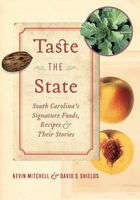Advertisement
Dumplings
Appears in
By Kevin Mitchell and David S. Shields
Published 2021
A dumpling is handful of dough, shaped in lump or strip form, often containing a filling, usually cooked in hot liquid, sometimes baked. Filled it can be a stand-alone food (the classic apple dumpling), unfilled it can supply a hearty adornment to a stew; a wholesome, hot spoonful of sumptuous carbohydrate. European in origin, the first dumplings had a set formula: suet, flour, yeast, water, and salt. In the American South where the hog supplanted the cow as the dominant animal on the farm, lard replaced suet in the classic formula, although suet remained an option. In the twentieth century, Crisco, or even butter, supplanted lard in some kitchens. Though modern dumplings are made with self-rising flour and expand by chemical reaction of the leaveners when cooked, the old suet dumpling was made with winter soft wheat (biscuit wheat) with yeast and water and formed into balls, and set in a warm place to rise. They were cooked by boiling, not frying. Fritters differed from dumplings.

